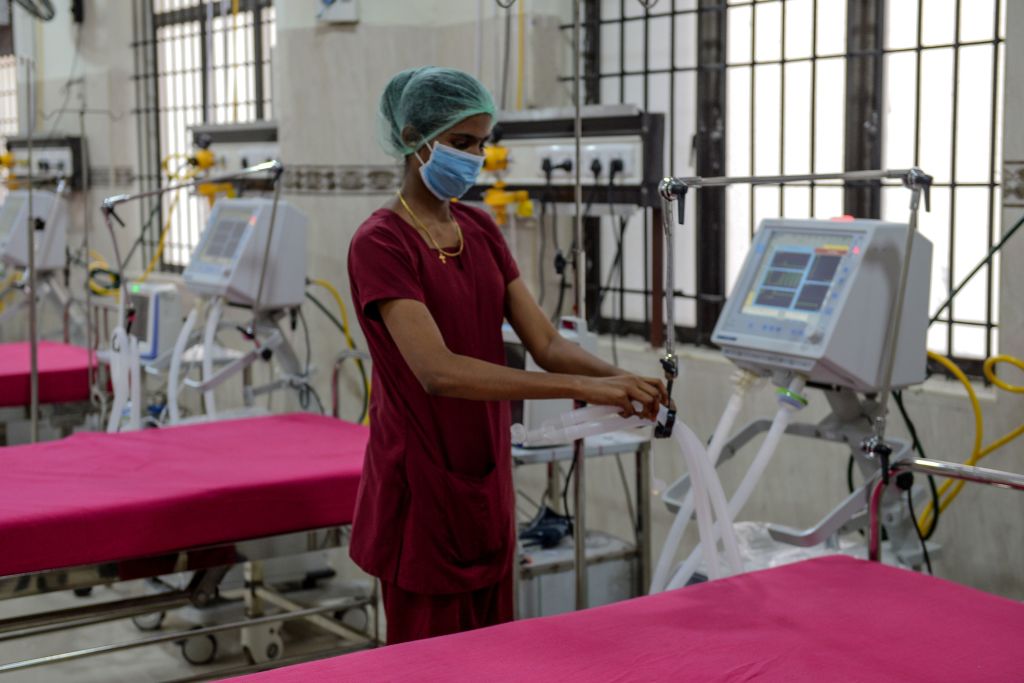Some doctors think ventilators can do more harm than good for coronavirus patients


The race to supply hospitals with more ventilators has been a defining characteristic of the COVID-19 coronavirus pandemic, but not every doctor believes the devices are the best way to treat patients, Stat News reports.
Normally, the decision to put patients on ventilators who are suffering from respiratory problems is driven by how low blood oxygen levels are. But some doctors are wondering if they should rely so heavily on those figures after noticing, per Stat, that many patients who have very low oxygen levels, which could often be considered near-fatal, aren't gasping air or showing other signs lung impairment.
Some patients are reportedly maintaining low carbon dioxide levels, which means their lungs are still performing the critical task of removing it despite struggling to absorb oxygen. This, doctors say, is more reminiscent of altitude sickness than pneumonia, and could be reason wait longer before deciding to move to a ventilator. Some small studies have backed the theory up.
The Week
Escape your echo chamber. Get the facts behind the news, plus analysis from multiple perspectives.

Sign up for The Week's Free Newsletters
From our morning news briefing to a weekly Good News Newsletter, get the best of The Week delivered directly to your inbox.
From our morning news briefing to a weekly Good News Newsletter, get the best of The Week delivered directly to your inbox.
If that's the case, some physicians believe that non-invasive breathing aids are superior to ventilators even in more severe cases (though some provide a greater risk of transmission to health care workers). They also come with fewer risks; many older patients who survive sedation and forceful intubation reportedly can suffer permanent cognitive and respiratory damage.
Dr. Scott Weingart, a critical care physician in New York, said he thinks patients do "much, much worse" on ventilators than non-invasive devices. "I would do everything in my power to avoid intubating patients," he told Stat. Of course, it's crucial to note that the novelty of COVID-19 has health care professionals learning how to treat the disease on the fly, and much remains unclear. Read more at Stat News.
A free daily email with the biggest news stories of the day – and the best features from TheWeek.com
Tim is a staff writer at The Week and has contributed to Bedford and Bowery and The New York Transatlantic. He is a graduate of Occidental College and NYU's journalism school. Tim enjoys writing about baseball, Europe, and extinct megafauna. He lives in New York City.
-
 A running list of the US government figures Donald Trump has pardoned
A running list of the US government figures Donald Trump has pardonedin depth Clearing the slate for his favorite elected officials
-
 Ski town strikers fight rising cost of living
Ski town strikers fight rising cost of livingThe Explainer Telluride is the latest ski resort experiencing an instructor strike
-
 ‘Space is one of the few areas of bipartisan agreement in Washington’
‘Space is one of the few areas of bipartisan agreement in Washington’Instant Opinion Opinion, comment and editorials of the day
-
 Nobody seems surprised Wagner's Prigozhin died under suspicious circumstances
Nobody seems surprised Wagner's Prigozhin died under suspicious circumstancesSpeed Read
-
 Western mountain climbers allegedly left Pakistani porter to die on K2
Western mountain climbers allegedly left Pakistani porter to die on K2Speed Read
-
 'Circular saw blades' divide controversial Rio Grande buoys installed by Texas governor
'Circular saw blades' divide controversial Rio Grande buoys installed by Texas governorSpeed Read
-
 Los Angeles city workers stage 1-day walkout over labor conditions
Los Angeles city workers stage 1-day walkout over labor conditionsSpeed Read
-
 Mega Millions jackpot climbs to an estimated $1.55 billion
Mega Millions jackpot climbs to an estimated $1.55 billionSpeed Read
-
 Bangladesh dealing with worst dengue fever outbreak on record
Bangladesh dealing with worst dengue fever outbreak on recordSpeed Read
-
 Glacial outburst flooding in Juneau destroys homes
Glacial outburst flooding in Juneau destroys homesSpeed Read
-
 Scotland seeking 'monster hunters' to search for fabled Loch Ness creature
Scotland seeking 'monster hunters' to search for fabled Loch Ness creatureSpeed Read
